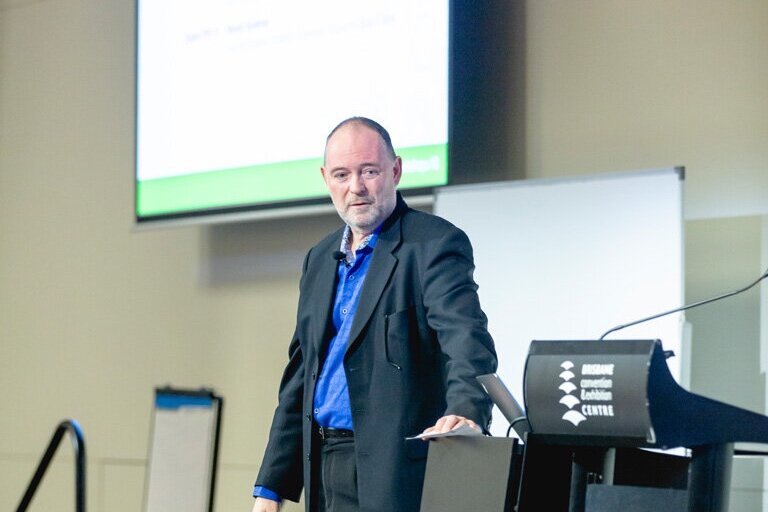Steven Bowman, managing director, Conscious Governance, roamed the auditorium wearing a lapel microphone, cajoling delegates to implement his ideas for better governance based on his experience of working with other boards in the not for profit sector.
The optimal way of running a board meeting
Bowman’s main message was that each item for a board agenda would be linked to one of the fund’s strategic goals. He urged chairs to rigorously enforce this, partly as a means of preventing “personal gripes that go on for ages” from individual directors. Such a policy would also mean that agendas should not have an item labelled as “any other business”.
“If your strategic plan is 4-5 goals over the next five years, then the main reason to meet is to monitor these goals,” he said. “This is the way a board meeting should be structured. This will force trustees to think that next level up.”
An additional idea was for boards to invite an external stakeholder, such as the chief executive of an employer that contributes to the fund, to attend every second or third board meeting to present for 20 minutes on two to three strategic issues affecting their industry and what the implications for the fund might be.
Bowman said this would help trustees think outside of what they already know, or what they think they know. The stakeholder could also be a member of the fund’s management, he said.
Boards should then question if their strategic plan was robust enough to deal with the observations they heard. In answer to a question from a delegate, Bowman said board papers should ideally arrive five working days before a board meeting was held.
Use your Vision statement for everything or rewrite it
Bowman described vision statements as ways for boards to assess the future and he bluntly told delegates such statements could be split into two groups; those that worked and those that did not. The best ways of assessing if a vision statement was not working, was if it was not being used constantly, he said. Bowman urged for such statements to be used “shamelessly” to help with decision making from anything from evaluation of providers to hiring of new staff.
A quick survey of super fund websites to find such statements by Bowman prior to his presentation led him to observe: “You guys such at putting these on websites.” He concluded that if vision statements were not being used sufficiently, then they should be ruthlessly ditched and rewritten.
Reports to the board should be written to empower quick decision making
Reports to boards should be present analysis, the choices that trustees can take on the report and the impact of nay decision taken on the fund’s strategic goals. Bowman said this would allow much faster decisions.
He gave the example of presenting a balance sheet to a board as a document for approval. He said such a document would ideally have in place the acceptable and the unacceptable positions for each of its key figures and a comparison with how far they had changed from the previous year. This would allow the board to focus on the strategic implications not the detail and make the role of a finance audit committee even more important.
“This is how we can change the culture of the board and move it to the next level,” said Bowman.
He added that often directors have problems in knowing the right questions to ask and that such reports would enable them to think more strategically on each of the options presented to them and was one of the quickest ways of improving governance.
How to review strategic goals
Bowman advised board to carry out an annual review of the relevance of the fund’s strategic goals. Such a meeting should ask five questions.
1) To ask the chief executive how the strategic goals were progressing
2) To ask what goals were not working
3) To ask what was missing from the strategic goals
4) To collectively ask what they could do about this.
5) To determine what needed to be added to the goals.
He suggested that such meetings could form part of a new trustee’s induction process.


